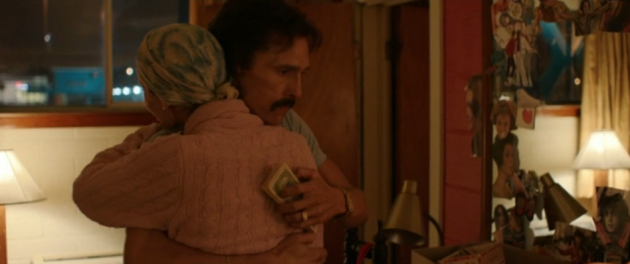Vallée’s creative
process is unique and is worth discussing. He picks new projects for their
story and characters instead of their potential themes.
When writing a script he makes sure to write lines of dialogue that he intends
to be portrayed by gestures. Music is a key inspiration for
him: he sends his actors music CDs for them to better understand their character, and he plays music on the set to communicate the
emotional feelings that he wants to convey in that scene. Even though he describes himself as
being part of the less-is-more school, his acknowledged cinematic influences
are Scorsese’s expressionism and Eastwood’s classicism.
But I don’t necessarily think that these two directors accurately describe what makes Vallée’s cinema so special. The two other directors that come to mind are Brian de Palma and Steven Spielberg, especially for his last two films. Café de Flore accomplishes what Cahiers sees in de Palma, especially the scenes of the DJ working, as it “conveys the pleasures of filmmaking – the director’s temperament is that of a musician.” With Dallas Buyers Club Vallée has now made his Spielberg film: it’s just like Schindler’s List. Ron Woodroof transformation throughout the film is like Oskar Schindler's in that he started out as a self-interested entrepreneur and grew to care and save these people in need. These examples illustrate how Valleé went from creating abstract visual expressions (c.f. Vallée and Kandinsky) to political forms (c.f. Dallas Buyers Club).
Vallée's cinema achieves what Jean Grémillon described as, “To seize the heart of the drama with a profoundness that bites at the heart of things” and are about “the atrocity of contradictions that are insurmountable and that tear up people.” In the face of threat, disease and death, Dallas Buyers Club’s spirit is a site of hope. What does Ron give Dr. Saks when trying to befriend her when they go out to a restaurant? His only remaining childhood possession: a painting of flowers by his mother. The creation of images is personal, art can move us, and hope is inspiring.
But I don’t necessarily think that these two directors accurately describe what makes Vallée’s cinema so special. The two other directors that come to mind are Brian de Palma and Steven Spielberg, especially for his last two films. Café de Flore accomplishes what Cahiers sees in de Palma, especially the scenes of the DJ working, as it “conveys the pleasures of filmmaking – the director’s temperament is that of a musician.” With Dallas Buyers Club Vallée has now made his Spielberg film: it’s just like Schindler’s List. Ron Woodroof transformation throughout the film is like Oskar Schindler's in that he started out as a self-interested entrepreneur and grew to care and save these people in need. These examples illustrate how Valleé went from creating abstract visual expressions (c.f. Vallée and Kandinsky) to political forms (c.f. Dallas Buyers Club).
Vallée's cinema achieves what Jean Grémillon described as, “To seize the heart of the drama with a profoundness that bites at the heart of things” and are about “the atrocity of contradictions that are insurmountable and that tear up people.” In the face of threat, disease and death, Dallas Buyers Club’s spirit is a site of hope. What does Ron give Dr. Saks when trying to befriend her when they go out to a restaurant? His only remaining childhood possession: a painting of flowers by his mother. The creation of images is personal, art can move us, and hope is inspiring.

No comments:
Post a Comment